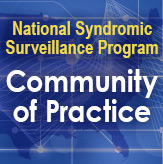New Jersey Leverages Syndromic Surveillance to Combine Multiple Data Sources for Detecting Occupational Injuries and Exposures

Work-related injuries have a human and economic impact for employers, workers, and communities.1 In New Jersey, from 2000 through 2018, more than 80,000 people were hospitalized for work-related injuries, and 1,913 workers died from fatal injuries.2 Because current data sources have a lag time from a few months to a few years, scientists at the New Jersey Department of Health (NJDOH) wanted the ability to capture work-related injuries and illnesses in near real-time to reduce occupational injuries and illnesses and make workplaces healthier and safer.
Syndromic surveillance collects chief complaint data in near real-time on people who seek care in emergency departments. The scientists added work-related syndrome definitions such as chemical exposures and tree-related injuries to EpiCenter, the NJDOH syndromic surveillance system that contributes data to the Centers for Disease Control and Prevention’s National Syndromic Surveillance Program. They also integrated data from the poison control center into EpiCenter, which allowed them to observe any increase in chemical exposure related to extensive cleaning and disinfecting since the onset of the coronavirus disease 2019 (COVID-19) pandemic.
Incorporating syndromic surveillance into their current occupational data collection methods gives New Jersey public health decision makers timely and comprehensive insight into community health and workplace hazards. For example, since the onset of the COVID-19 pandemic, people have been using more cleaning and disinfectant products and suffering more adverse health effects. By monitoring chemical exposures through EpiCenter, NJDOH’s staff can observe work-related chemical exposures likely attributed to COVID-19 cleaning and disinfection. The data being collected are used to inform education campaigns and to develop practical solutions for reducing preventable hazards in New Jersey workplaces. Through funding from the National Syndromic Surveillance Program, syndromic surveillance is improving the nation’s public health.
1Traumatic Occupational Injuries | NIOSH | CDC
2State Occupational Injuries, Illnesses, and Fatalities (bls.gov)
Public Health Problem
Work-related injuries have a human and economic impact for employers, workers, and communities.1 Occupational injuries are reportable under New Jersey state law. Examples of reportable exposures include asbestosis, work-related asthma, and poisonings due to heavy metals and pesticides. From 2000 through 2018, more than 80,000 people were hospitalized for work-related injuries, and 1,913 workers died from fatal injuries.2 Many occupational injuries are preventable if safety guidance is enforced and people in the workplace have proper training and education.
Actions Taken
To better understand the problem, scientists at the New Jersey Department of Health (NJDOH) Occupational Health Surveillance Unit sought to expand data collection by adding new data sources. They collaborated across NJDOH to identify data sources that would build upon their current data collection methods. EpiCenter, a flexible syndromic surveillance system that captures chief complaint data in near-real time, was integrated into their current occupational health data collection methods. EpiCenter sends data to the Centers for Disease Control and Prevention’s National Syndromic Surveillance Program. Any data collected contributes to improving the picture of public health at state, regional, and national levels.
Health department scientists integrated the New Jersey Poison Information and Education System (NJPIES) as an additional data source for occupational health surveillance. Because occupational poisonings are reportable under New Jersey state law, NJPIES coding can identify occupational exposures. The scientists also collaborated with the NJDOH Communicable Disease Service to stream daily uploads of state poison data into EpiCenter—all in near real-time. The NJPIES data are also used to supplement the chemical exposure syndrome definition in EpiCenter.
Since the onset of the coronavirus disease 2019 (COVID-19) pandemic, more extensive use of cleaning and disinfectant products has resulted in adverse health effects. By monitoring poison data, surveillance staff can observe work-related chemical exposures likely attributed to COVID-19. For example, surveillance staff identified three school bus drivers who sought care in emergency departments after being exposed to a disinfectant commonly used against SARS-CoV-2. The bus drivers were asked to clean the buses without appropriate personal protective equipment and later complained of nausea, dizziness, and headache. After identifying this trend through syndromic surveillance, the information was integrated into a fact sheet for educating school personnel on how to safely disinfect schools and buses for COVID-19 while protecting workers and children.
Outcome
Occupational health data, collected from multiple sources, are helping New Jersey provide safer, healthier workplaces.
Contacts
Office of Public Health Data, Surveillance, and Technology
Division of Health Informatics and Surveillance
www.cdc.gov/nssp
This success story shows how NSSP
- Improves Data Representativeness
- Improves Data Quality, Timeliness, and Use
- Strengthens Syndromic Surveillance Practice
- Informs Public Health Action or Response
The findings and outcomes described in this syndromic success story are those of the authors and do not necessarily represent the official position of the National Syndromic Surveillance Program or the Centers for Disease Control and Prevention.
